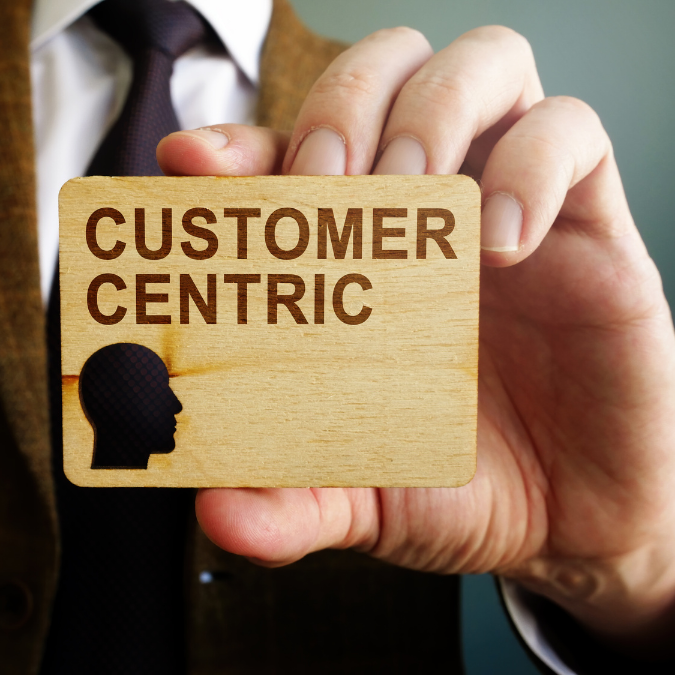Technology adoption in Kenya has brought profound changes in automotive retail. With mobile penetration exceeding 100%, online channels have become integral to the buying process. 56% of buyers now start their research for vehicles on the Internet before ever stepping into a showroom.
Local dealerships yet to digitize face mounting challenges today. Used car classifieds like Cheki Cars and JIJI are heavily marketed across Google and social media, constantly remaining top-of-mind.
Their inventory photographs, pricing data, and lead generation forms provide an information advantage traditional dealers struggle to match.
Additionally, corporates entering ride-hailing services leverage their apps and data to double down into pre-owned sales. This brings massive competitive pressure for smaller players lacking the technology infrastructure.
Dealers reliant only on legacy banners, radio, and print advertising risk sinking into irrelevance and sales declines through lost discovery opportunities.
This calls for urgent adoption of digital strategies that align with changing customer preferences. As the marketing partners for numerous successful businesses across Kenya, we have identified core areas that need priority focus:
- Website Optimization
- Search Engine Visibility
- Social Media Presence
- Online Lead Management
- Analytics and Tracking
This blog provides a blueprint to help dealerships progress their digital capabilities on multiple fronts. By leveraging our expertise to form an integrated online presence, targeted campaigns, and sales funnel measurement systems, dealers can thrive amidst the current challenges.
The time to take action is now before losing even more ground to mobile-first marketplaces and digital disruptors.
Conduct Detailed Audience Research

Getting a solid grasp of your potential customers is the foundation for effective digital marketing. You need awareness across multiple facets – ranging from basic demographics to subtle psychological triggers – that drive purchase decisions. Go beyond surface traits and segment users into clearly defined buyer personas based on deeper motives. Align messaging, offers, and channels accordingly for resonance.
Gather Customer Intelligence
Leverage analytics across existing sales data, website behaviors, ad interactions, email campaigns, etc for actionable intelligence. Supplement with market research surveys and external local area demographic data relatable to drivers. Key aspects to highlight include:
Age and Life Stage
Document age distribution. Note life milestones like college graduates, newlyweds, first-time parents, and retirees that influence vehicles wanted. Each has different requirements – space, efficiency, tech, etc.
Occupation and Income

Classify professional status and earning brackets. This impacts affordability which trickles down into financing needs and qualifying budgets. Blue-collar workers will have vastly different expectations than corporate executives.
Family
Priorities greatly vary between single youth and couples with children, as needs shift from performance to family safety. Identify if the target segments are married, have kids, or care for relatives. This translates into ideal car types.
Location
Map out catchment zones around your dealership by zip codes. Farther areas imply a willingness to travel for better deals. Define potential geographic targets also factoring neighbourhood demographics at a granular tier.
Online Habits
Note which search engines, classifieds, review sites, social media platforms, and auto blogs resonate most with your audience. These form core advertising channels and indicators of digital savviness. Mobile readiness remains highly important today for convenience.
Building psychographic profiles to this degree allows personalization at scale based on micro-segments. Messages can be matched to what will trigger action for each subset when done systematically. This level of relevance delivers dramatically higher conversions compared to a generic one-size-fits-all approach still used by many old-school dealers.
Craft a User-Centric Dealership Website

Your website is the digital flagship representing your brand. It needs to instantly convey credibility and provide an efficient buying experience to drive conversions. Avoid cluttered designs that over-prioritize promotions. Shift focus towards visitor needs through the following:
Immerse Visitors in Your Inventory
The primary intent for site visitors is to explore potential vehicles to purchase. Make search, filters, and browsing highly intuitive through:
- Smart Categorization – Structure inventory by makes, body type, fuel type, price range, etc. This facilitates navigation to exact specifications.
- Faceted Filters – Allow combined filters on year, miles, exterior color, drivetrain, and other variables to pinpoint exact matches.
- Visual Galleries – Display images prominently across listings, vehicle research pages, and category landings to engage visitors scrolling.
- Comparisons – Build a side-by-side feature to compare selects on vital stats like efficiency, dimensions, seating capacity, etc.
- Videos – Embed virtual test drives and walkarounds to showcase your stock.
Prioritizing inventory discovery over promotional banners builds trust and keeps visitors engaged on-site.
Share Detailed Listings

Each vehicle display must showcase comprehensive information to answer visitor queries about conditions, features, and ownership costs covering:
- Mileage and Service History – Assure prospects of reliability.
- Equipment and Configuration Details – List trim levels, connected tech, etc.
- Financing Calculators – Project loan terms aligned to a personal budget.
- Virtual Appointments – Allow booking test drives within the listing through calendar integrations.
Such transparency indicators help customers shortlist selections fitting Needs and budget constraints.
Guide Users Down Conversion Funnels
Combine robust site architecture with intuitive calls-to-action across key pages directing visitors further down conversion processes:
- Vehicle Listing > Book Test Drive
- Vehicle Research Pages > Request Quote
- Special Offers Page > Apply for Financing
User flows should culminate in lead generation or appointment booking for sales reps to take over.
Getting these micro funnels right through customer journey mapping ensures maximum prospects turn into tangible conversions to hit monthly targets.
Boost Visibility through Search Engine Optimization

SEO builds lasting visibility and lead sources by ranking you prominently within search engine results. The organic method aligns perfectly with how 90% of auto shoppers use Google and YouTube to conduct pre-purchase research.
Implement an ongoing content strategy focused on priority keywords and topics customers seek during different stages:
Attract Early Research Stage Buyers
These prospects are still exploring options and are open to guidance. Create articles, FAQs, and videos comparing popular models, segment benefits overviews, explaining trim levels, etc. Optimize with keywords like:
- Honda City versus Toyota Vios Kenya
- Affordable 7-seater SUVs
- Lease vs loan car financing
Such informational content ranks for discovery searches and positions your dealership as an authority they turn to.
Show Relevance for Car Accessories Demand

Related searches around everyday accessories have huge local volumes like:
- Toyota Altis model wheel caps
- Audi Q5 floor mats Nairobi
- BMW x6 tire dealers in Kenya
Target these to attract custom accessory sales beyond just vehicles.
Build Trust for Ownership Queries
Existing customers search around maintenance, warranty, and common issues like:
- Prado TX fuel pump repair costs
- Civic turbo warranty coverage in Kenya
- Nearby Ford service centers
Satisfy such queries through blog posts and videos to reassure customers post-purchase. These establish your dealership as their go-to support resource for the vehicle’s lifespan.
Localize All Content
Embed dealer name, location refinements, and relevant city references in content to outrank aggregated portals. Highly focused relevance drives click-throughs specifically to your inventory and booking links.
Driving organic growth through SEO takes time but accrues dividends for years as assets keep attracting recurring sales. The insights into audience interests also inform precise paid targeting.
Craft Topic-Focused Pages

Create dedicated pages targeting informational searches potential customers make during research including:
Individual Vehicle Pages
Publish in-depth pages for every vehicle model you sell highlighting specifications, accessories options, common questions, and comparisons with rivals. Optimize them for keywords like:
- Buying a used Toyota Landcruiser Nairobi
- Latest Ford Ranger pickup features
- BMW X5 off-road performance in Kenya
Interlink these deep content pages together to spread authority signals.
Inventory Category Pages
Build overview guides for used cars, SUVs, electric cars, luxury sedans, etc showcasing current stock listings. Curate by budget segments like cheapest sedans or 7-seater SUVs below a million shillings. Include sorted filters, inquiry forms, and appointment booking CTAs.
Car Loan & Finance Pages
Outline available financing and leasing options, eligibility criteria, repayment calculators, documentation checklist, etc to gain traffic from finance information searches that have substantial local volume based on Google Trends.
Publishing niche pages aligned to search patterns allows you to catch consumers during high-intent queries and route them straight into your sales funnel. The content also builds authority to stand out against directories.
Leverage Social Media for Customer Engagement

Active social media accounts on Facebook, Instagram, Twitter, TikTok, and YouTube humanize dealerships and foster connections with digitally native audiences. Drive growth through:
Schedule Regular Posting
Maintain an editorial calendar for daily content shares including new arrival announcements, staff & and community events, industry news, special car displays, contests, etc. Media formats should range from photos, clips, reels, live videos, and ads.
Respond to Comments

Sales reps should promptly reply to post reactions and DMs across channels as it indicates interested prospects. Quick response nurturing leads also portray reliability to engage wider followers.
Initiate Thought Leadership
Share perspectives around industry analysis, car reviews, maintenance tips, hype release reactions, etc to spark conversations that position executives as subject experts. Consider relevant hashtags.
Promote Inventory
Create Facebook and Instagram vehicle catalogs with photos, details, and booking links to reach mid-funnel buyers actively searching for options within their network feed. Carousel image galleries work well.
Amplify through Paid Ads
Allocate 25% of the digital ad budget towards social platforms. Create promotions for stock clearance timed sales. Target by intent keywords, competitor followers, and lookalike audiences using tracking pixels to maximize visibility.
An authentic omnichannel social presence sustains awareness and funnels prospects into your sales process. Assign dedicated community managers instead of ad-hoc posting for best dividends.
Continuous Retargeting Wins Back Lost Leads

The bulk of site traffic leaves without converting instantly. Retargeting re-engages such visitors after they leave by tracking and redisplaying relevant ads as they browse elsewhere online post-visit. This repetition eventually leads many previously “cold” prospects back into your sales funnel.
Setup conversion tracking across vehicle listings, inquiry forms, and high-traffic pages using pixels and cookies to:
Create Customer Profiles
Build individual browsing history – from time on site, pages visited, forms entered and inventory clicked. These indicate preliminary preferences to redisplay accordingly.
Set Up A Sequence Across Channels
As the visitor navigates Google search, Facebook, and YouTube post visit, display targeted product recommendations matching their initial interest to spark re-consideration.
Offer Personalized Incentives

Identify quote requests that didn’t follow up and serve special discount ads only to them as a sweetener to complete the purchase. The extra nudge often works. Welcome-back messages also build goodwill.
Expand Lookalike Targeting
Feed the tracking data into custom audience creation for finding more similar, high-intent prospects who can be cost-effectively re-targeted based on actual observed indicators proving interest.
Sustained retargeting essentially functions as an automated email sequence+ lead nurturing system at scale across channels – nudging users incrementally the more they reveal intent through behaviours, while expanding exposure to those resembling them.
This drives up long-term conversion rates exponentially compared to abandoning visitors after one-off visits. Allocate at least 20% of digital budgets towards this perpetual funnel.
Track and Measure Efforts

Digital marketing success depends on how well campaigns are monitored and optimized. Leverage analytics for:
Setting KPIs
Define website, social media, and lead goals. Establish baselines to improve against.
Monitoring Traffic
Track weekly sessions, top landing pages, acquisition channels, and sales assisted for insights.
Analysing Behavior Flows
See typical click journey sequences. Find leak points impacting conversion rates.
Assessing Leads
Breakdown quality indicators like page depth, durations, referrers, etc to refine targeting.
A/B Testing
Experiment with subject lines, ad images, calls to action, and more to maximize performance.
Proper analytics is instrumental in allocating the budget efficiently. It also helps showcase campaign ROI to internal stakeholders for continued buy-in and spending.
Conclusion
The digital space offers tremendous opportunities for car dealerships to engage connected customers. Prioritize website experience, localization, video, and retail media to stand out.
At the same time nurture prospects through relevant social media conversations, targeted advertisements, and personalized post-visit touchpoints.
With the right omnichannel strategy coupled with data-driven optimization, your dealership can thrive amidst the growing competition online.



